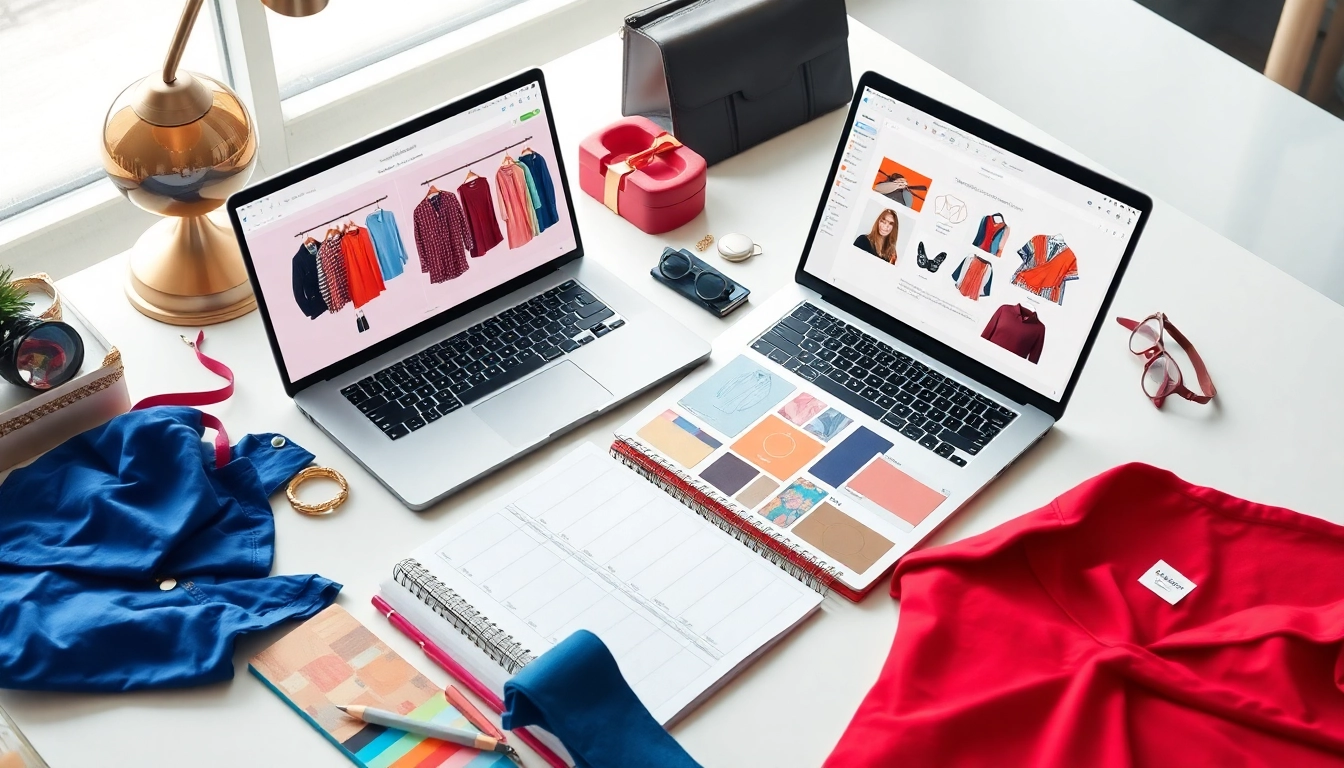Understanding the Concept of an Outfit Planner
What is an Outfit Planner?
An outfit planner is a tool or app designed to help individuals streamline their wardrobe management, allowing them to effectively plan, organize, and coordinate their outfits. This concept has gained tremendous popularity by providing users with a systematic approach to dressing that maximizes style while minimizing the morning chaos of deciding what to wear. With an outfit planner, users can visualize their clothing options, create combinations, and even schedule outfits for different occasions.
The Benefits of Using an Outfit Planner
Utilizing an outfit planner comes with numerous advantages:
- Time Efficiency: An outfit planner saves time each morning by eliminating the need to ponder over clothing choices.
- Cost Efficiency: By utilizing existing wardrobe pieces creatively, users can save money that would be spent on new clothing.
- Sustainability: It promotes mindful fashion choices, encouraging users to wear what they already own instead of constantly buying new items.
- Increased Creativity: Users often discover new outfit combinations they might not have considered, enhancing personal style.
- Seasonal Organization: It helps in categorizing outfits based on seasons, ensuring users are better prepared for weather changes.
Common Features of Outfit Planners
Outfit planners vary in features, but many include:
- Wardrobe Inventory: A digital catalog of clothing items, shoes, and accessories.
- Calendar Integration: The ability to schedule outfits for specific events or days.
- Mix and Match Functionality: Tools to create new outfits from existing pieces.
- Style Recommendations: Suggestions based on personal style preferences or current fashion trends.
- Sharing Capabilities: Options to share outfit ideas with friends or within a community.
Setting Up Your Personalized Outfit Planner
Choosing the Right Tools for Your Outfit Planner
When embarking on the journey of outfit planning, selecting the right tools is crucial. Many choose mobile applications or web-based platforms that offer access from anywhere. Consider the following when making your selection:
- User Interface: Ensure that it is user-friendly and intuitive.
- Compatibility: Check if the tool can sync with calendars or other organizational apps.
- Customization: Look for tools allowing personalization of styles, colors, and categories.
- Reviews and Community Feedback: Research ratings to gauge reliability and effectiveness.
Organizing Your Wardrobe for Efficient Planning
Effective outfit planning begins with a well-organized wardrobe. Here are strategies to arrange clothing:
- Category Sorting: Divide clothing into categories such as tops, bottoms, outerwear, and accessories.
- Color Coordination: Arrange clothes by color, making it easier to create visually appealing outfits.
- Seasonal Rotation: Keep seasonal items together and off-season items stored away.
- Clothing Condition: Regularly review clothing for wear and tear, removing pieces that no longer serve your style.
Integrating Fashion Trends into Your Outfit Planner
Fashion is ever-changing, and an effective outfit planner allows for the incorporation of new trends:
- Research Trends: Stay updated with fashion blogs, runways, and social media influencers.
- Profile Trends: Create sections within your planner to experiment with current trends.
- Mix Classics with New Trends: Pair timeless pieces with trendy items for fresh looks.
- Document Your Experience: Keep track of what works for you and adapt accordingly to refine your style.
Maximizing Efficiency with Your Outfit Planner
Daily Outfit Planning and Time Management
Daily outfit planning can drastically alter your time management:
- Evening Preparation: Choose and layout outfits the night before to streamline morning routines.
- Weekly Planning: Set aside time each week to plan outfits for the upcoming days.
- Consider Activities: Align outfits with planned activities such as work, workouts, or events.
- Optimize Layering: Plan for varying temperatures by layering options within your outfits.
Seasonal Wardrobe Adjustments with Your Outfit Planner
As seasons change, so do the wardrobe necessities:
- Seasonal Swap: Transition clothing by reviewing fall/winter versus spring/summer items.
- Focus on Versatility: Select items that can transition across seasons with layering.
- Incorporate Seasonal Accents: Utilize accessories to add seasonal flair without compromising the primary outfit.
Using Your Outfit Planner for Travel and Events
Traveling or attending special events calls for strategic outfit planning:
- Pack Smart: Select multipurpose clothing that can be mixed and matched.
- Document Outfit Choices: Use your planner to ensure outfits cater to the climate and activities at your destination.
- Include Event Attire: Plan for specific events in advance to avoid travel dilemmas.
Creative Ways to Enhance Your Outfit Planner Experience
Incorporating Technology into Your Outfit Planner
Embrace technology to elevate the outfit planning experience:
- Mobile Applications: Utilize outfit planner apps that allow quick outfit swapping and updates.
- Augmented Reality: Experiment with apps that allow virtual outfit trials.
- Wearable Technology: Consider wearables that can track and analyze outfit choices for better optimization.
Utilizing Social Media for Outfit Inspiration
Social media platforms can serve as abundant sources of outfit inspiration:
- Follow Fashion Influencers: Keep an eye on fashion influencers who reflect your style.
- Create Inspiration Boards: Use platforms like Pinterest to pin outfit ideas that resonate with your preferences.
- Engage with Communities: Participate in fashion communities for sharing outfit ideas and feedback.
Joining Fashion Communities to Share Outfit Planner Ideas
Being part of fashion communities enhances learning and sharing:
- Join Online Forums: Participate in fashion-related forums to exchange ideas and trends.
- Local Fashion Groups: Connect with local groups for meetups and outfit sharing sessions.
- Participate in Challenges: Engage in outfit planning challenges to push your creativity further.
Evaluating the Effectiveness of Your Outfit Planner
Tracking Your Style Evolution with Your Outfit Planner
Monitoring your style evolution can be insightful:
- Maintain a Log: Track outfits worn and occasions to evaluate your wardrobe’s versatility.
- Calculate Frequency: Assess which items are worn most often and which remain untouched.
- Reflect and Adjust: Regularly analyze what works and what doesn’t to stay in tune with your evolving style.
Assessing Outfit Planner Impact on Your Daily Routine
Evaluate how the outfit planner has affected daily life:
- Time Assessment: Keep track of time saved getting dressed.
- Confidence Level: Note changes in confidence and style satisfaction after using the planner.
- Feedback Loop: Seek feedback from peers on outfit choices to measure improvements.
Gathering Feedback for Continuous Improvement
Continuous improvement ensures your outfit planning stays relevant:
- Survey Friends or Family: Ask for honest opinions regarding outfit choices.
- Engage with Style Communities: Share your outfits to gain insight from fellow fashionistas.
- Adapt with Trends: Take feedback into account to adjust your planning to align with current trends and preferences.



